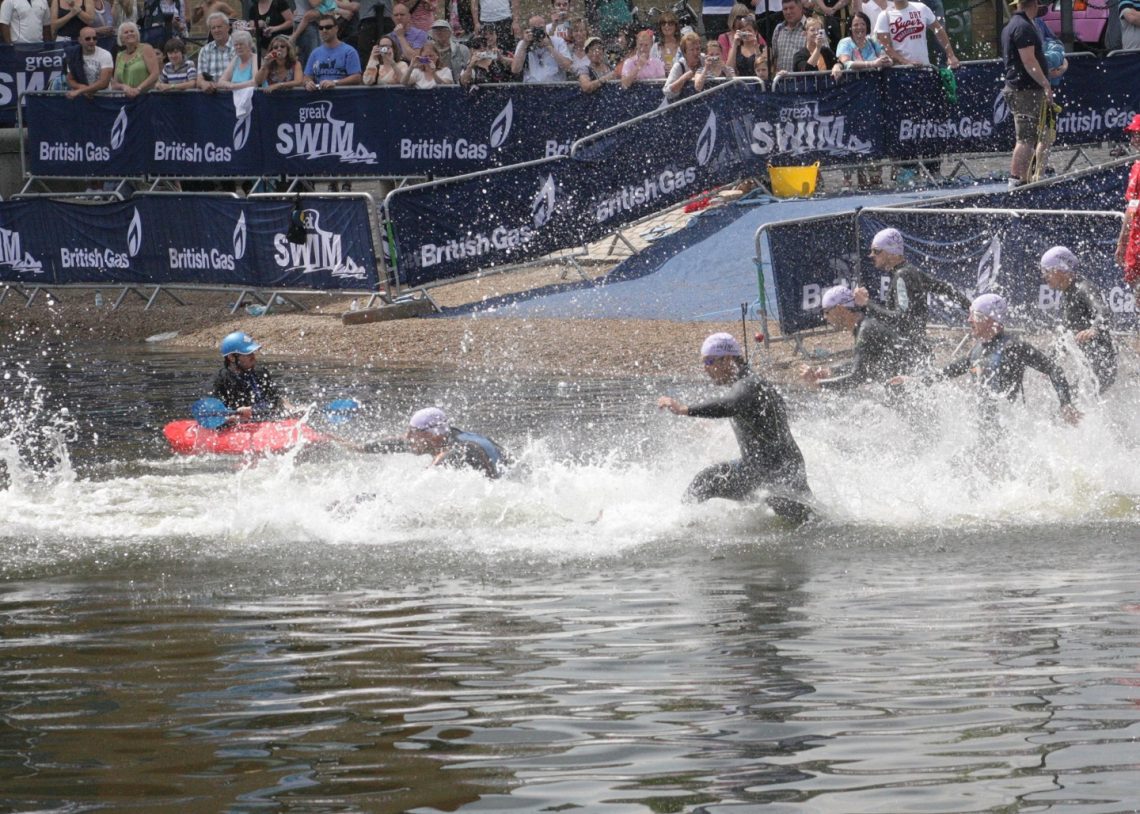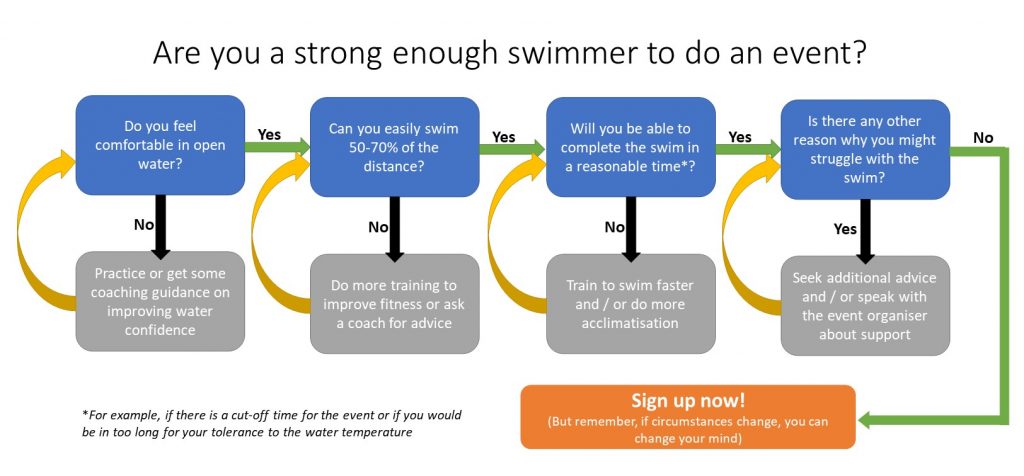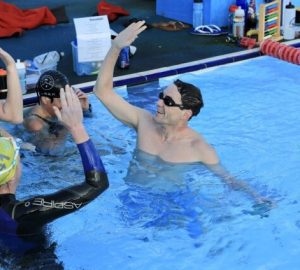
Are you a strong enough swimmer to do an event?
Not ready now doesn’t mean not ready ever, says Simon Griffiths
Outdoor swimming, in general, is a welcoming and inclusive activity. It’s also a relatively safe one. We, as a publisher, encourage everyone who wants to swim outdoors to try it. As long as you follow some basic precautions, you can access the joys and benefits of outdoor swimming with quite limited swimming abilities. However, we would advise anyone getting into open water to ensure they have at least the ability to float without panicking and to propel themselves calmly through the water – and to ensure they have familiarised themselves with the usual safety precautions.
The question is, when it comes to events, should the bar be set higher? While we value inclusivity and accessibility, and encourage those who want it to test their abilities in an event, we suggest there are limits, for several reasons.
Well-run open water events are very safe. There will be lifeguards and safety kayakers on the water and emergency medical support on land. By and large, other swimmers will look out for you, and the event will be stopped if conditions make it dangerous. Event organisers do their best to welcome a wide range of swimming abilities and most will be supportive of swimmers with additional needs.
However, swimming events differ from land-based events, such as running or cycling, in a fundamental way. If you get tired on a run or a bike ride, you can walk or stop. You can sit down under a shady tree and take a break. You are not afforded that luxury in the water. If you need to stop, you may need to be extracted from the water by the safety team. You will almost certainly be fine, but while the safety team are looking after you, they won’t be watching everyone else.
Secondly, there are additional risks in outdoor swimming from the cold. While this can be a risk in other types of event, being in the water can cause you to cool down very quickly, possibly leading to swim failure or hypothermia. You therefore not only have to consider if you can cover the distance, but you also need to be confident you can cope with the water temperature for however long the swim takes you.
Thirdly, you need to think about your swimming speed in the context of the event. Is there a cut-off time? Will you be fast enough to swim against a current if one is expected?
Finally, are you confident in open water? Every year at events swimmers are pulled out in the first 50 to 100m, not because they can’t swim, but because they have panicked or were not prepared for the conditions, whether that’s the temperature, waves or swimming close to other people.
There are no fixed rules here about minimum swimming ability in order to do an event. It’s a question of individual judgement based on the event and your level of risk tolerance – but do remember that if you do struggle, it’s not just yourself you put at risk. We would never want anyone to think “I’m not a good enough swimmer to do an event” but it might be wise to sometimes say, “I’m not ready to do this event at the moment.”
We’ve created the flow chart below to help you decide if you’re ready for an event, and some suggestions for what to do if you’re not.










